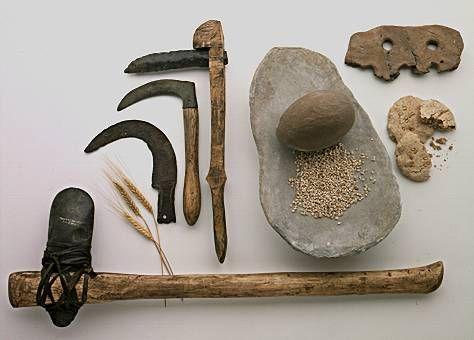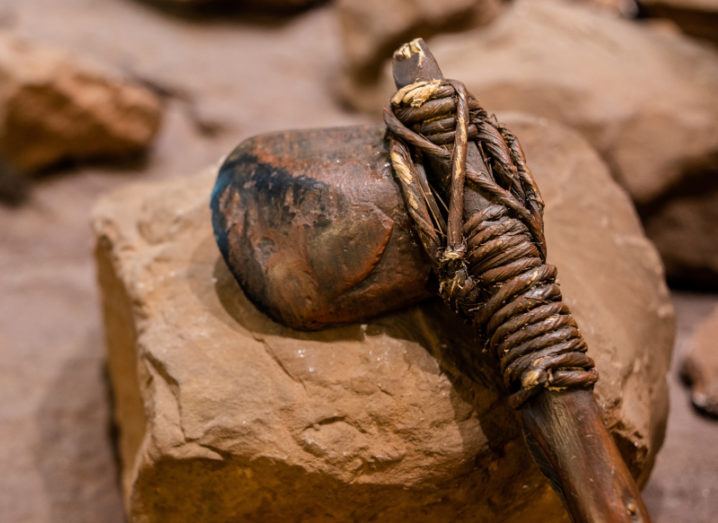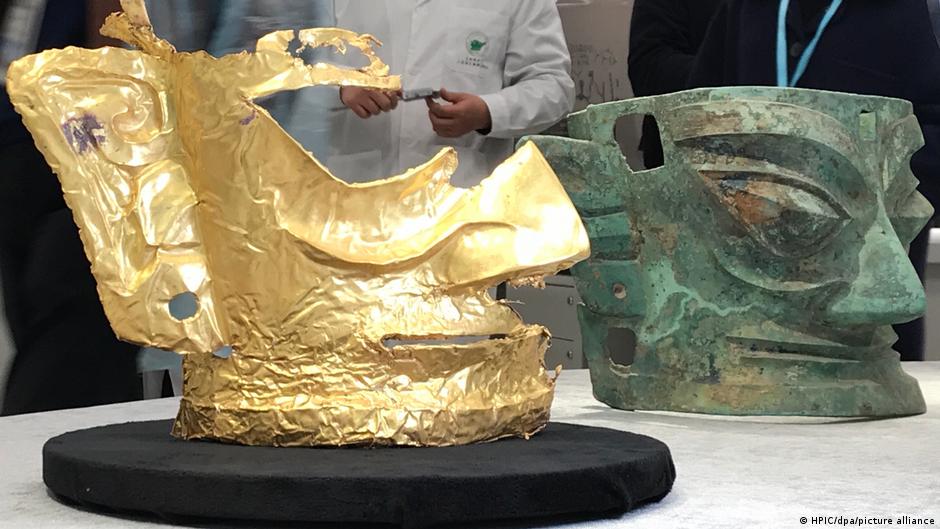Tool usage is one of the many traits that homo sapiens adopted and expanded upon that really separated us from the rest of the animal kingdom. There are a lot of animals that have found ways of using extremely basic tools, such as rocks, but it’s only been humans that took these basic tools and improved them over time, making them easier to use and more efficient.
Over hundreds of thousands of years, we went from using little more than pieces of flint, to using heat and other methods to craft more advanced tools, which would eventually lead us to become the incredible tool makers that we are today.
Sharpened Stones
Around 2.6 million years ago, our ancestors began to make use of sharpened stones. These were stones that had their flakes removed to create a sharp edge, and they would have used these stones to scrape, cut, and chop materials as well as their foods. It remains the very first example of a real tool usage by some of the easiest ancestors in human history.
Hand-axe
One of the most advanced tools that we developed was the hand-axe, and these were invented by removing the flakes off rock cores in order to shape them into thinner implements. The hand-axe had sharp edges on either side as a result of the flaking, known as bifacial working, and these tools were much more effective and sharper than the stones used in the previous entry.
These stone hand-axes have been found across the world and are thought to have originated in Africa.
Cutting Blades
Further along in the late Stone Age, both modern humans and Neanderthals began to make use of a cutting tools. These were tools that were made by removing long flakes from stone cores to create blades, which were quickly became one of the best methods of cutting around. Their shape also made it much easier to attach the blade to a handle, which helped with efficient as well as making it easier to work with the tools.

Neolithic Tools
Sometime around 12,000 years ago, modern humans began to work on more modern tools, known most commonly as Neolithic tools. This was the New Stone Age, and it was during this time that hunter-gatherers would be making the transition to more well-established settlements as well as the creation of agriculture – which many consider the dawn of civilisation, and would eventually lead to the modern age of global transportation, computers, and even pastimes like the latest online casino real money NZ game. The tools that they used were labours of love, and they would spend time finding the right stones, and grinding and polishing them until they were just right. Not only were these tools much more robust, but they could be sharpened, and were strong enough to allow the people of the time to cut down woodland to make space for their settlements. They would use these tools until the invention of copper and later bronze, making the end of the stone age.



